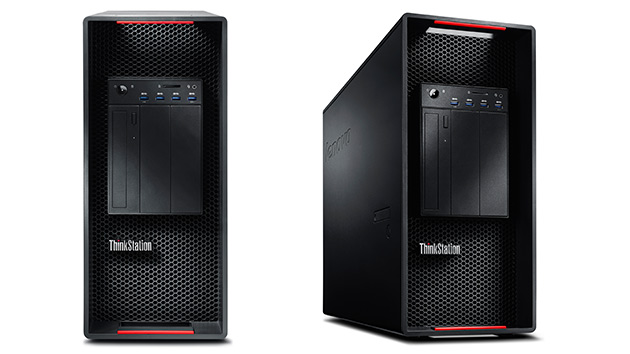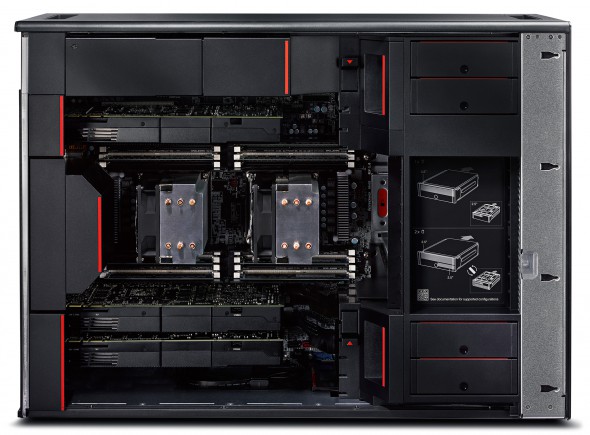At SIGGRAPH today, Lenovo is fleshing out its plans for the ThinkStation P Series line of desktop workstations, building on the previously announced P300, which replaced Lenovo's E32 workstation and now takes its place at the entry level of the P-Series line-up. Three more P-series ThinkStations have been announced with features including completely tool-less access to components and a USB-based "diagnostic port" that allows users to download an error log to an Android or Windows Phone app and forward it to a dedicated ThinkStation website.
"The P Series is our best-designed workstation ever," said Rob Herman, Lenovo's director of worldwide workstation product marketing, at a press briefing in New York City. Herman said the P500 replaces the Lenovo S30 workstation, the P700 replaces the C30, and the P900 "surpasses" the previous D30 as Lenovo's high-end desktop workstation.
The system is built around Lenovo's Flex system of trays and connectors. The Flex Bay at the front of the system can be configured with an optical drive or a variety of IO options (including media card readers or a FireWire connection). Drives are installed using Flex Trays that support both 2.5-inch and 3.5-inch drives. (Each tray can be used to mount two 2.5-inch drives, meaning the P900 can be configured with as many as 14 hard drives.) Finally, the Flex Connector is a mezzanine card that connects to the motherboard, providing two PCIe based connections for SATA, SAS or PCIe storage or RAID without taking up PCIe slots.
Under the hood of the P900 with the air baffle removed for better visibility. The red lines denote tool-less "touch points" allowing users to access drive trays and other system components, all the way down to the motherboard. Also visible is the QR Code that can be used to access system specific documentation from the Lenovo website. Click to load the image at full size.
Lenovo stressed the "tri-channel" architecture of its systems, with what Herman described as a "passive, bifurcated air baffle" that's engineered to help draw cool air to the CPU while warm air is pushed out vents in the back of the case.
Herman also took some time to tout Lenovo's advances in the workstation market, claiming its share of the worldwide desktop market has improved from 2.4 percent in 2008 to an estimated 11.3 percent in the second quarter of 2014.
Here are the specs for the new systems. All three are expected to be available in October.
* optional
Crafts: Editing Post/Finishing VFX/Animation
Sections: Technology
Topics: New product lenovo siggraph 2014 workstations
Did you enjoy this article? Sign up to receive the StudioDaily Fix eletter containing the latest stories, including news, videos, interviews, reviews and more.












Leave a Reply